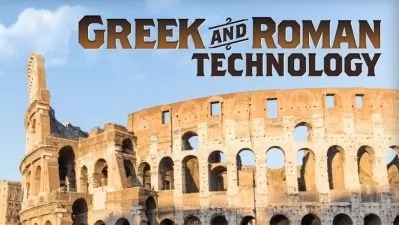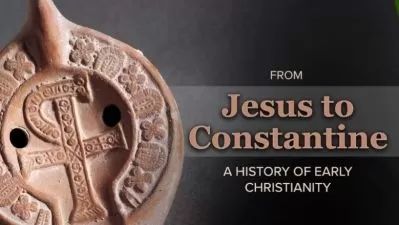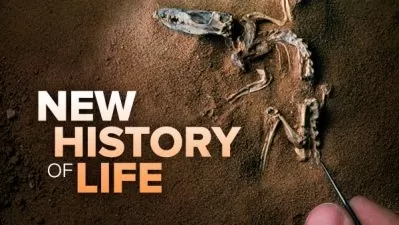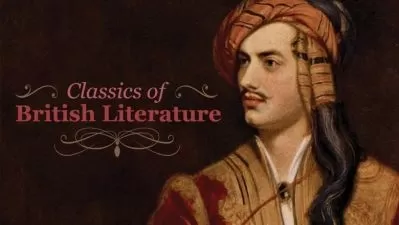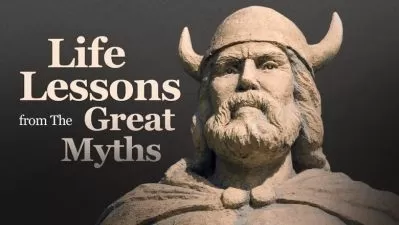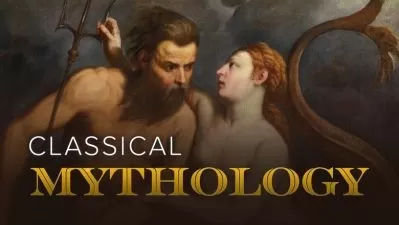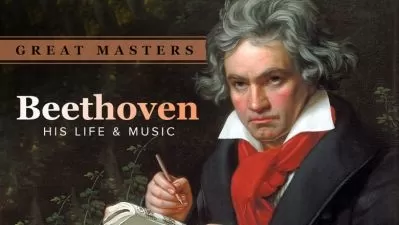Genius of Michelangelo
William E. Wallace
16:27:32
Description
The Sistine Chapel ceiling. The Pietà. The David. The Last Judgment. The Moses. The Dome of St. Peter's Basilica. Michelangelo's artistic achievements, in their scope and execution, seem unimaginable. His brilliance is apparent in every medium he worked in and with every tool he used. Today, more than 500 years after his unique artistry burst forth on the Renaissance world, the breadth and depth of his accomplishments still confound our attempts to grasp their full importance.
How much do we really know about Michelangelo? Conflicting viewpoints and much confusion surround many aspects of the Renaissance artist's life and art; myth and legend so envelop him that he sometimes seems more like a caricature than a complete human being. Despite a familiarity with some of his works, aspects of Michelangelo's art and life remain open to interpretation. For example:
- Was he, in fact, difficult to work with?
- Why did he fall out of favor with art critics until the 18th century?
- Did he work alone or with assistants?
- What was the significance of his name, his birthplace, and his religious beliefs?
In The Genius of Michelangelo, internationally recognized Michelangelo expert and award-winning Professor of Art History William E. Wallace gives you a comprehensive perspective on one of history's greatest artists, unavailable in any other course. Drawing on a vast command of artistic knowledge and period detail, these 36 intellectually rewarding and visually dazzling lectures explore the relationship between truth and legend to reveal a groundbreaking new picture of Michelangelo as an artist, a businessman, an aristocrat, and a genius.
Rediscover a Master
Living nearly 89 years (twice as long as most of his contemporaries), Michelangelo Buonarroti's career spanned the glories of Renaissance Florence, the discovery of the New World, the Reformation and the stirrings of the Counter-Reformation, and the pontificates of 13 popes—9 of whom employed him at some point.
"Few artists have achieved as much as Michelangelo in so many diverse endeavors," notes Professor Wallace. "Few so completely embody our very notion of genius."
Arranged as a chronological survey of the artist's life, The Genius of Michelangelo presents a thorough understanding of Michelangelo's life and work, informed by a broad consideration of the artist and his times, as well as the specific circumstances and contexts in which he crafted his art. As you follow Michelangelo's rise, you learn to separate fact from fiction and to penetrate the myths that have long hampered a complete understanding of this unforgettable artist.
"We cannot help but wonder at the humanity, tenacity, and awe-inspiring accomplishments of such a man," remarks Professor Wallace. "Although deeply human and sometimes vulnerable, Michelangelo rose above mundane circumstances and employed his incomparable gifts and transcendent genius to create sublime works of art, for the world and for all time."
New Insights, Fascinating Stories
"The truth," notes Professor Wallace, "is that we are less likely to discover new works of Michelangelo but rather to discover new things about him." Throughout the course, you discover new insights about aspects of Michelangelo's formative years:
- Born into a patrician family, Michelangelo spent his youth in the town of Settignano, a village of craftsmen in the stone trade whom he would later hire and use as his assistants.
- By the time he was 12, Michelangelo was apprenticed to Domenico Ghirlandaio, one of the great Renaissance masters and the greatest artist in Florence.
- At age 15, Michelangelo was brought by Lorenzo de' Medici into the Medici household, where he was educated alongside two Medici princes and future popes.
You also explore fascinating stories behind the creation of Michelangelo's most beloved works, all of which give you new vantage points from which to see this genius's personality at work:
- The Pietà: Michelangelo insisted on traveling to the marble quarry himself to supervise the extraction of the marble block for this project, which is unusual considering the great number of places he could have purchased readily quarried marble in Rome. Off and on, he spent a total of four years of his life in marble quarries, supervising the extraction of marble for his favorite artistic medium: sculpture.
- The David: Originally intended as a buttress for the Florentine Cathedral, its magnificence compelled the civic government to place it at Florence's very heart: the Piazza della Signoria. Shifting the statue from its expected religious context was the start of our modern conception of art, with an increasing burden of responsibility placed on the viewer to interpret a work's meaning.
- The Sistine Chapel ceiling: Michelangelo was originally commissioned to paint the 12 apostles, but he successfully lobbied for a much grander and more complex scheme that illustrated major scenes from the book of Genesis, including the now-iconic scene of God bestowing Adam with life. The project was completed in four years.
A Well-Documented History
Michelangelo's work is among the most well documented and well preserved in the history of art; the bulk of his output in sculpture, painting, and architecture survives to this day. The Genius of Michelangelo draws on the master's works, as well as a wealth of additional documentation that survives, to help reconstruct the details of Michelangelo's life:
- Nearly 1,400 letters in which more than 1,100 persons are named, creating a veritable cross-section of 16th-century society
- More than 600 drawings, even though Michelangelo burned many of them toward the end of his life
- Some 300 poems that he wrote, reflecting the artist's talent not just as a painter and sculptor but as a poet as well
- Some 300 pages of miscellaneous records
- Two biographies written during Michelangelo's lifetime that serve as testaments to his contemporary fame
A Passionate, Knowledgeable Instructor
The author of numerous books on Michelangelo, Professor Wallace has been enchanted by the Renaissance artist since a visit to St. Peter's Basilica as an undergraduate student, where he encountered the marvels of the Pietà, the Moses, and the Sistine Chapel ceiling for the first time.
His passion and knowledge of Michelangelo and his works earned him an invitation by the Vatican in 1990 to confer about the conservation of the frescoes in the Sistine Chapel. In addition, Professor Wallace appeared in the BBC film The Private Life of a Masterpiece: Michelangelo's David, and served as the principal consultant for the BBC film The Divine Michelangelo.
Professor Wallace puts his teaching skills on display throughout these lectures, which feature more than 800 visuals, including stunning reproductions of Michelangelo's sculptures, paintings, and architecture, as well as rough sketches, preparatory drawings, and photographs of the places he lived and worked.
The Genius of Michelangelo, infused with the passion and knowledge of an expert instructor, enriches your appreciation of Michelangelo's many accomplishments and enhances your understanding of one of the world's greatest and most familiar artists.
More details
User Reviews
Rating
William E. Wallace
Instructor's Courses
The Great Courses
View courses The Great Courses- language english
- Training sessions 33
- duration 16:27:32
- English subtitles has
- Release Date 2023/05/09






